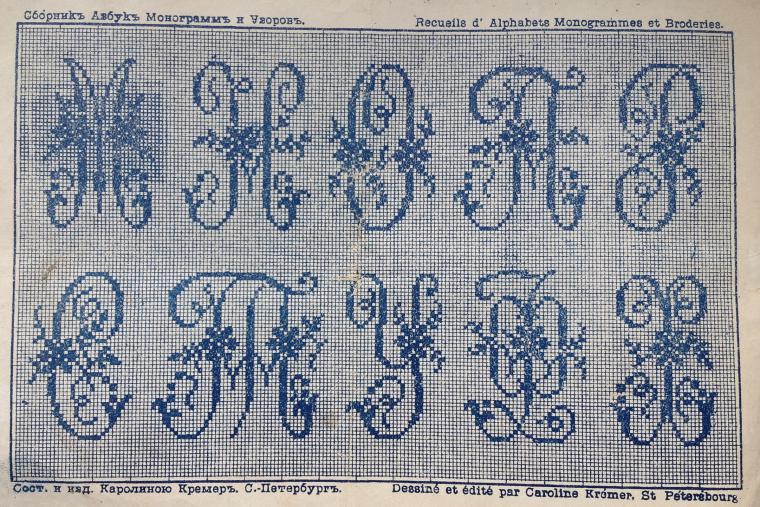 As soon as beautiful dresses and blouses with ready-made decorations appeared on the Russian market, women’s interest in needlework decreased. But those who truly love handicrafts do not stop creating original embroidery on clothes, thereby emphasizing their individuality. In this article we will look at what a monogram is and present patterns of patterns.
As soon as beautiful dresses and blouses with ready-made decorations appeared on the Russian market, women’s interest in needlework decreased. But those who truly love handicrafts do not stop creating original embroidery on clothes, thereby emphasizing their individuality. In this article we will look at what a monogram is and present patterns of patterns.
Monogram embroidery
Decorating a dress in this way means making the item elegant and personal. In ancient times, only aristocrats who wanted to emphasize their status used such decor.. Today the monogram is available to everyone. It is used not only for clothing, but also for curtains, tulle, and bed linen.
What is a monogram
One of the meanings of this word, which is heard by many, is beautiful interlacing of initials. In other words, a kind of mark that is left on personal belongings. However, needlewomen are more familiar with the second concept - an image consisting of intertwining lines.
This pattern can be made in two ways:
- satin stitch;
- cross.
ADVICE. It is best for beginning needlewomen to try embroidering a monogram with floss threads, since silk or viscose threads slip and twist a lot. This creates certain inconveniences.
Embroidery patterns
Here are several models of both the Russian alphabet and ornaments suitable for decorating the neck of a dress.

These are antique monograms. The diagrams were found in a book from 1917, but are still relevant today.

After all, such embroidery is an old Russian tradition.

Beautiful “floral” letters with butterflies will look elegant on a dress and create a spring mood.

The neck of the dress can be decorated with lovely ornaments, giving the product individuality.
Tips for embroidering a monogram on a dress
With the help of such decoration, needlewomen create unique things. But don’t think that this is easy to do.

ATTENTION. The ornament, consisting of many shades, requires care and perseverance.
One small mistake can cause the design to shift.
- To ensure that the pattern comes out even, the canvas is carefully sewn to the dress, and then the embroidery is started. When the work is completed, the auxiliary material is pulled out string by thread.
- For convenience, you can also apply dots to the fabric of the product. To do this, the diagram is drawn on graph paper, which is then connected to tracing paper.
- Punctures are made on the model and then transferred to the material. The dots mark the places where crosses need to be made.
Thus, no matter how complex the drawing may seem, once you start working, you will understand how interesting it is. And its results will please you for a long time.


 0
0




